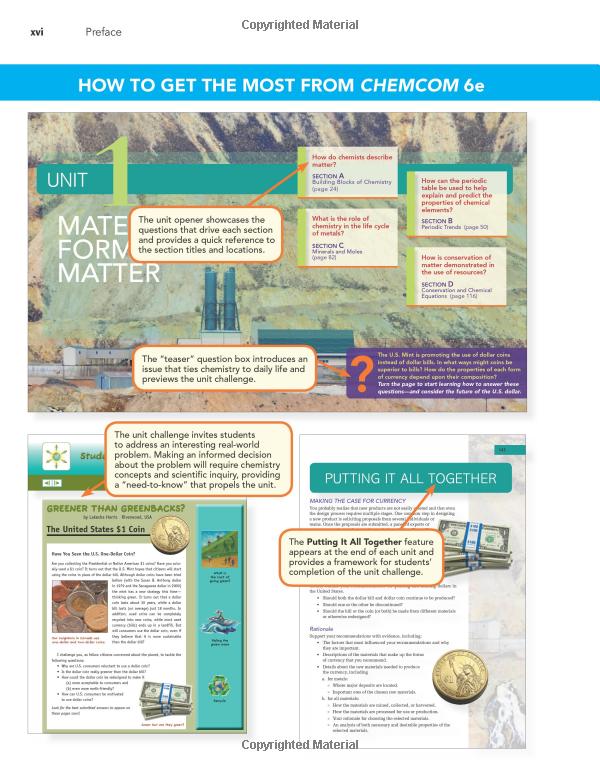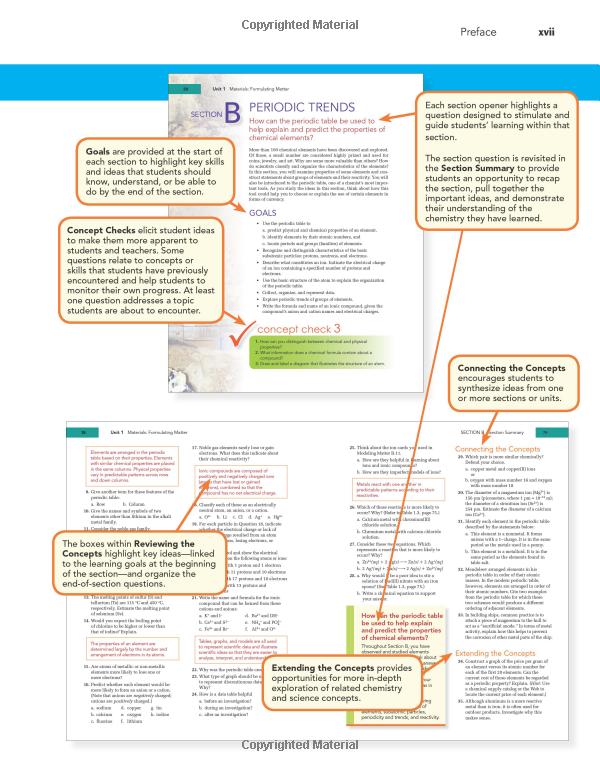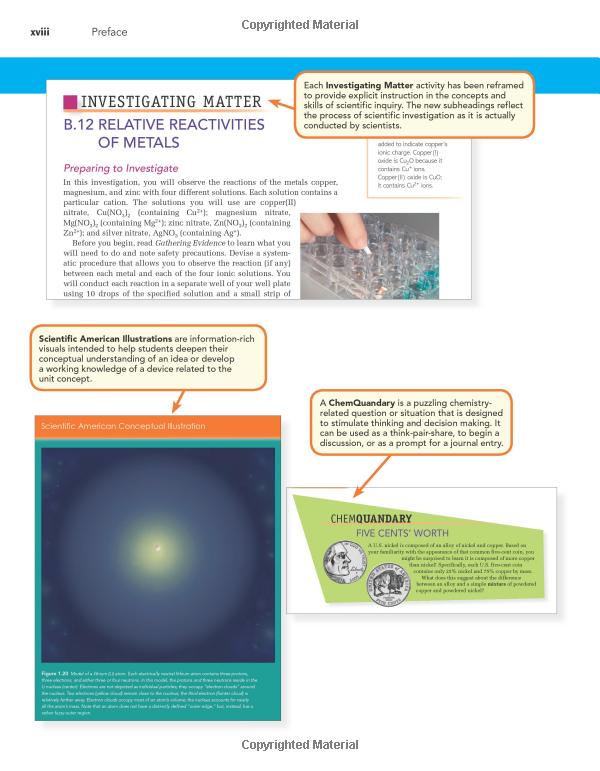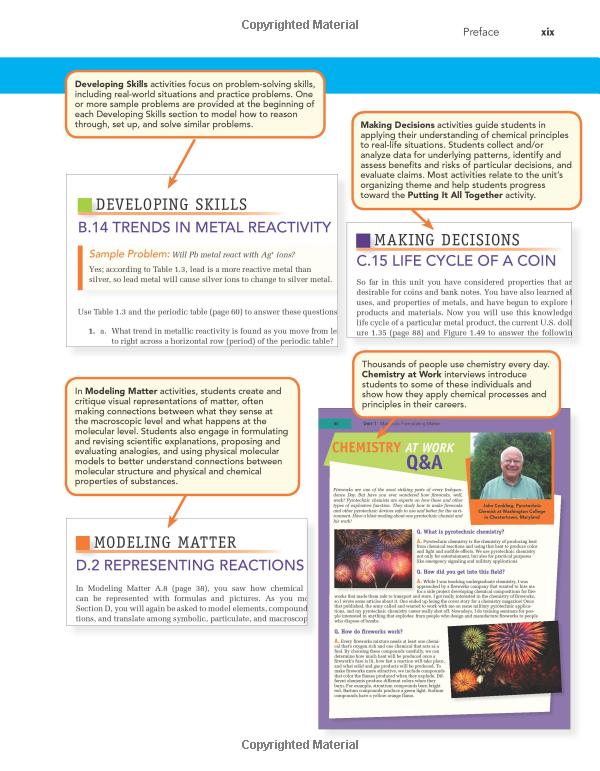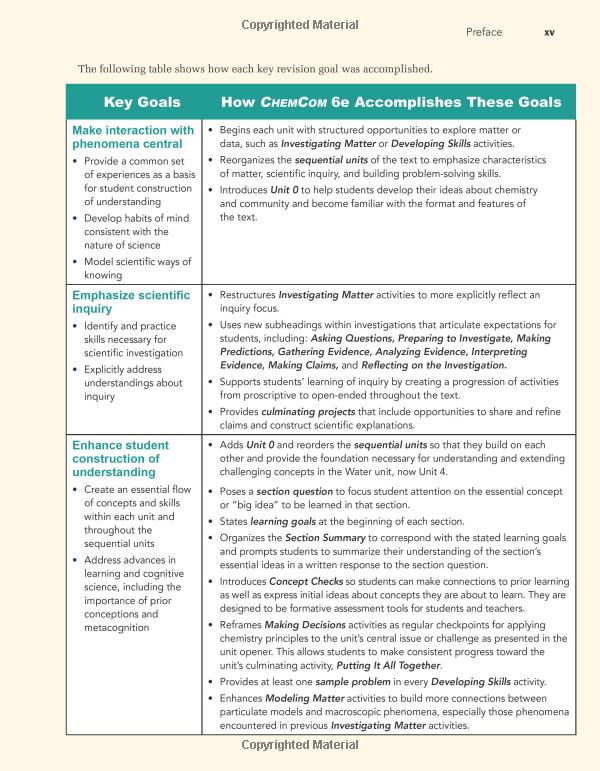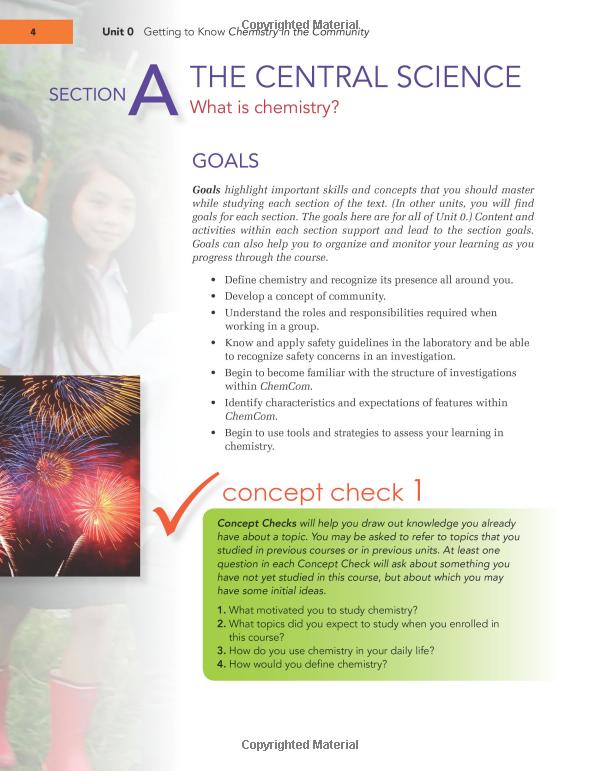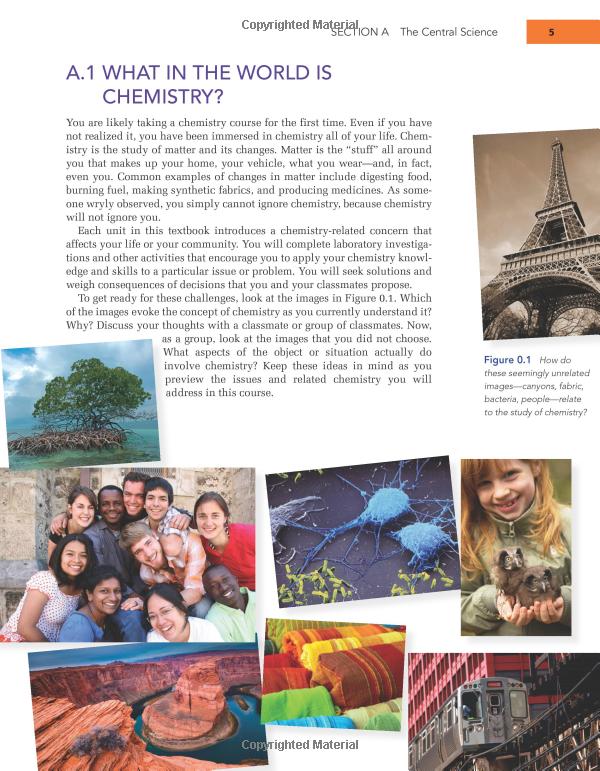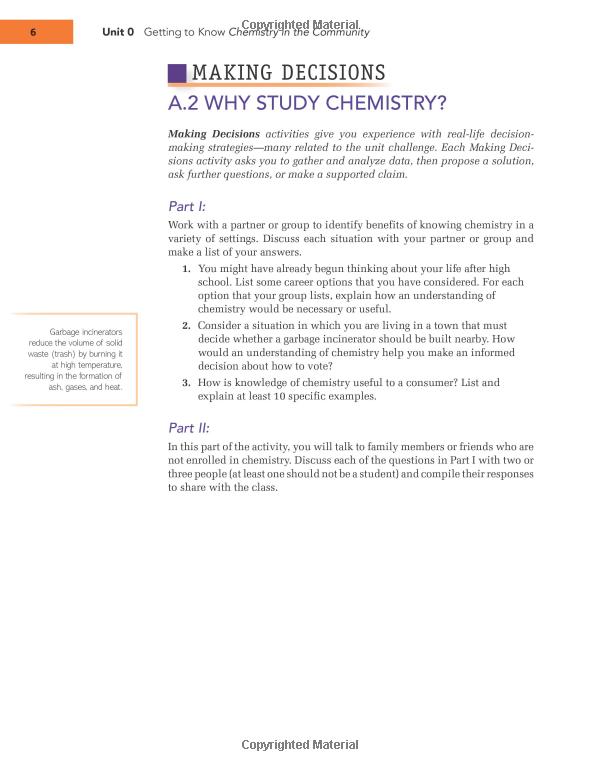With the ChemCom program, students are exposed to organic and biochemistry, they learn about environmental impacts through a chemistry lens, and they are taught to explain macroscopic observations by understanding the particulate nature of matter. ChemCom covers the traditional chemistry topics in the context of societal issues and real-world scenarios. The text integrates the laboratory investigations into the units; there are 39 investigations written following the Science Writing Heuristic. Each unit culminates in a "Putting it all Together" project, where students put their new chemistry knowledge to the test to solve a real-world problem.
What's Inside
Each Unit
Each unit focuses on a different real-life scenario and extracts the chemistry topics.
Unit 0 — Getting To Know ChemCom
Traditional Chemistry Topics
Textbook orientation, introduce format of text, safety rules.
Real-World Lens the Chemistry is Taught Through
What is chemistry? How can it be studied safely?
Final Activity (Putting it all Together)
Write a letter to yourself that outlines how you’d like to see success come from this class – both for yourself and your community.
Unit 1 — Materials: Formulating Matter
Traditional Chemistry Topics
Chemical vs. physical properties, periodic table, matter, ionic vs. covalent compounds, composition, redox reactions, moles, balancing equations, conservation of matter.
Real-World Lens the Chemistry is Taught Through
How are materials chosen for products? Investigation of metal vs. paper for currency.
Final Activity (Putting it all Together)
Write a letter to yourself that outlines how you’d like to see success come from this class – both for yourself and your community.
Unit 2 — Air: Designing Scientific Investigations
Traditional Chemistry Topics
Pressure, gas laws, KMT, ideal gas law, phase changes, stoichiometry, electromagnetic spectrum, properties of acids and bases.
Real-World Lens the Chemistry is Taught Through
How is air quality and pollution monitored and controlled in our community?
Final Activity (Putting it all Together)
Create a poster and write a letter to a local government official with your concerns about pollution and how you plan to investigate the air quality in your community.
Unit 3 — Petroleum: Breaking and Making Bonds
Traditional Chemistry Topics
Physical properties (boiling point, separation of mixtures), intermolecular forces, LDFs, covalent bonding, molecular geometry, organic chemistry, alkanes, isomers, thermochemistry, polymers and reactions, functional groups, heat of combustion, conservation of energy, fuel cells.
Real-World Lens the Chemistry is Taught Through
What sources of energy do we have access to and how do we decide which one to use?
Final Activity (Putting it all Together)
Create an accurate advertisement that promotes purchasing a nontraditional car (electric, hybrid, biodiesel, etc.). A technical summary should accompany the advertisement.
Unit 4 — Water: Exploring Solutions
Traditional Chemistry Topics
Electronegativity, hydrogen bonds, intermolecular forces, solutions, molarity, solubility, dilution, solubility curve, precipitate reactions, net ionic equations, pH scale, acid strength, buffers, osmosis, separating mixtures.
Real-World Lens the Chemistry is Taught Through
Why are the fish dying in a local river? How can water be analyzed to see whether it’s contaminated?
Final Activity (Putting it all Together)
Students are assigned to different roles in a town council meeting. They will assemble to figure out what’s going on. Parties in attendance include agriculture representatives, mining representatives, chamber of commerce members, taxpayers association, EPA scientists, sanitation commission, and town council members.
Unit 5 — Industry: Applying Chemical Reactions
Traditional Chemistry Topics
Oxidation states, energy diagrams, kinetics, equilibrium, LCP, activity series, voltaic cells, standard reduction potentials.
Real-World Lens the Chemistry is Taught Through
Should a town allow a fertilizer plant and/or a battery factory to move into town? Learning about the chemistry of the two industries allows students to weigh the pros and cons.
Final Activity (Putting it all Together)
Stage a city council meeting with specific roles to discuss what direction the town should take after evaluating the pros and cons of each industry as well as considering the economic and environmental impact on the community.
Unit 6 — Atoms: Nuclear Interactions
Traditional Chemistry Topics
Radiation, radioactive decay, atomic structure, isotopes, alpha decay, beta decay, fission, fusion, half-lives, chain reactions.
Real-World Lens the Chemistry is Taught Through
Should a nuclear power plant be built in town?
Final Activity (Putting it all Together)
Respond to a flyer (provided in the book) that lists a number of concerns about radiation. Some are exaggerated, some are false, and some are true, so students need to evaluate after the unit how to react to citizens’ concerns.
Unit 7 — Food: Matter and Energy for Life
Traditional Chemistry Topics
Calorimetry, conservation of energy, carbohydrates, fats, limiting reactant, proteins, amino acids, enzymes, hydrolysis reactions, vitamins, minerals.
Real-World Lens the Chemistry is Taught Through
What snacks should the vending machine offer at school?
Final Activity (Putting it all Together)
Write a proposal to the PTA outlining the foods you’d like to see offered in the vending machine with evidence for why the options you’d like available are the right ones for teenagers.


